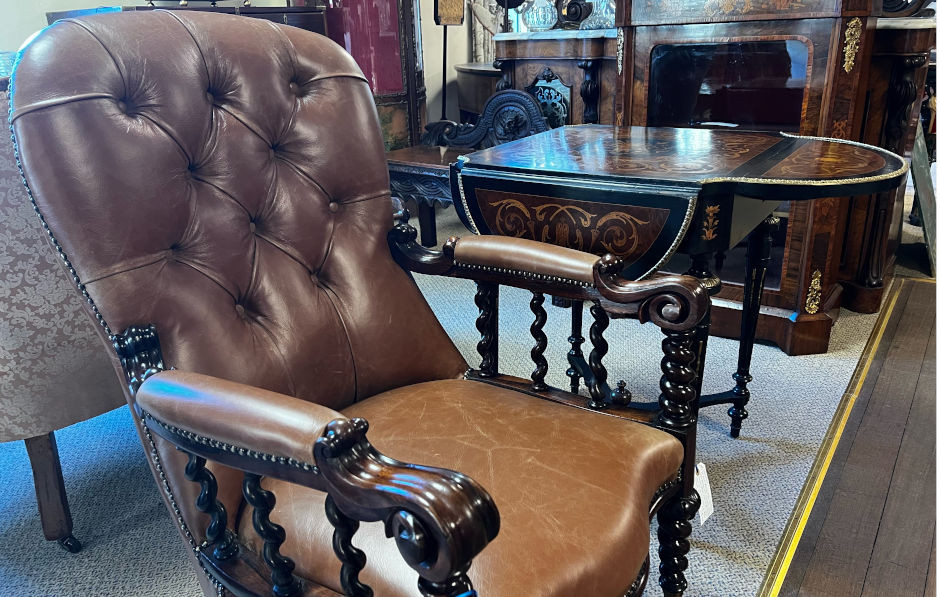
Determining the age of an antique chair requires skill and expertise. Here, our dealers share their tips to help you date your antique chairs.
The first step to dating an antique chair is to understand the different types of antique chair styles there are, and to familiarise yourself with the various design eras there have been. A chair’s general style and appearance will give you a good starting point, and our collector's guide to English antique furniture periods walks you through the most popular furniture eras, with their date ranges.
Knowing the approximate date of an antique chair based on its style and appearance should be followed by a closer look at the following details:
Materials used in the production of an antique chair
The age of an antique chair can often be narrowed down by looking at the material it has been made from. For example, furniture from the Queen Anne period is often made from walnut or cherry wood, while the Victorians had a penchant for mahogany and oak. Remember too that iron did not come into fashion until the mid-19th century, chrome and aluminium in the 1920s while plastic did not make an appearance until the mid-20th century.
Chairs up to the end of the 17th century were made from solid wood with pegged tenons, with nails not generally being used until the 18th century. Look closely where there are nails as early examples were hand produced with a rustic, handmade air and square heads. The invention of a screw-cutting machine at the end of the 18th century saw the introduction of the slotted straight head screw in antique chair manufacturing, with the crosshead screw coming along in the 1930s.
Examine any stuffing used in upholstered antique chairs too. Organic materials were popular with horsehair being the upholstery filling of choice until the 19th century and a mark of a quality piece. Later pieces often feature a mixture of horsehair, cotton, and hay.
Method of manufacture
It is fair to say that machine manufactured chairs are likely to be more recently made than a handcrafted piece but where a piece is upholstered, it requires careful examination to decide how the chair has been made. Pieces with handmade, dovetail joints were popular from the late-17th through to the early-18th centuries they are likely to have an asymmetry typical before the introduction of precision cutting machines of the industrial revolution era.
Manufacturers’ markings
Furniture makers’ marks are a good indication of the age of an antique chair but beware fake marks that may have been added to pass the piece off as authentic. Early pieces will have a symbol or mark burned into the wood, usually on the underside of the chair where it will not be seen. Branded marks or carved symbols were used in the 18th and 19th centuries, and were replaced by paper labels or metal plaques later. Familiarising yourself with popular makers’ marks can help enormously when dating an antique chair and our blog post on 20th century furniture makers’ marks is useful for mid-century modern pieces.
These tips will put you on the right path to identifying the age of your chair and if you are looking for an antique chair, our Hemswell dealers offer a wide range of items from across the ages. Join us for a day and wander through our four building displaying the wares from over 300 expert dealers or browse our selection of antique chairs for sale online.